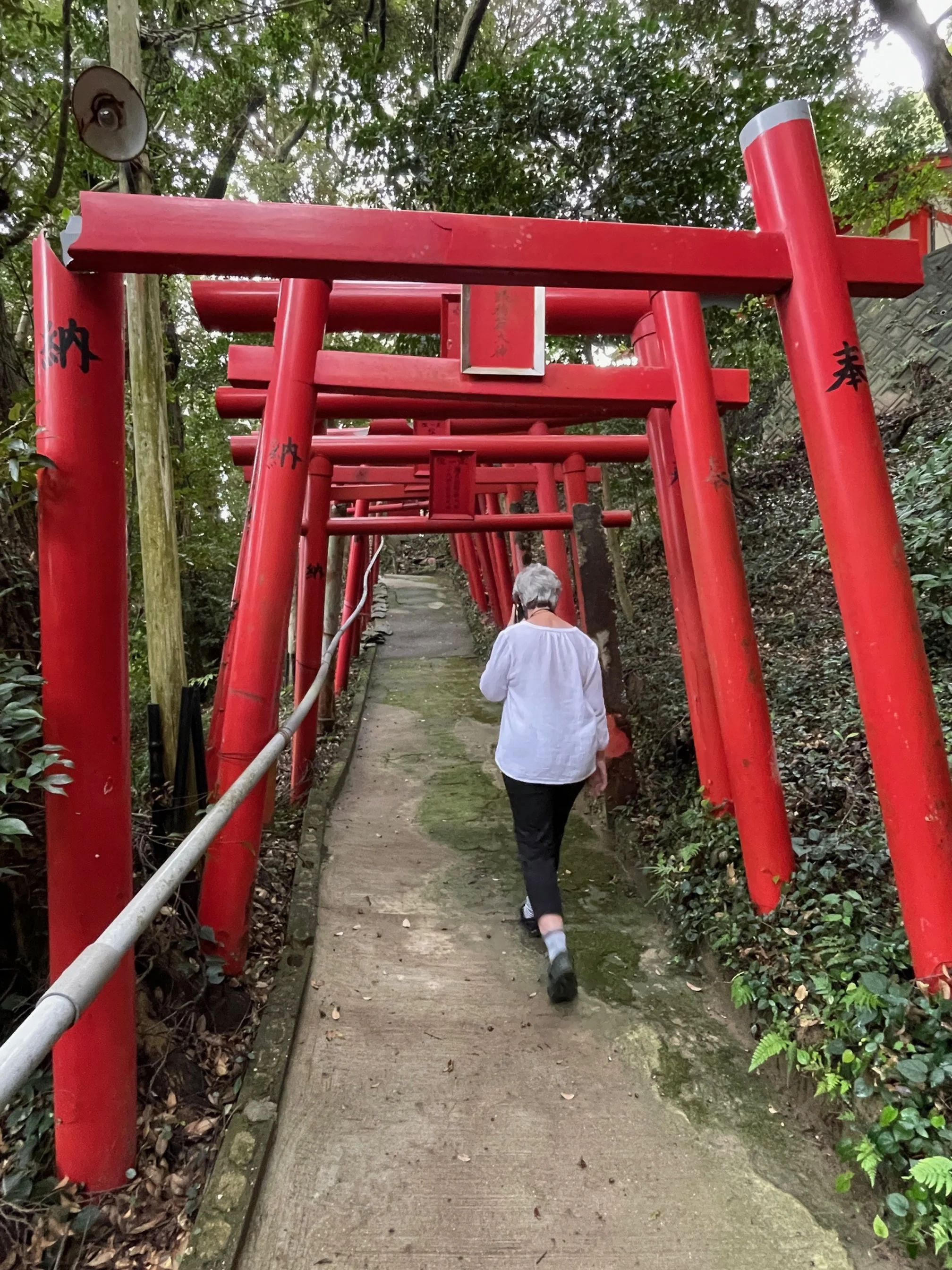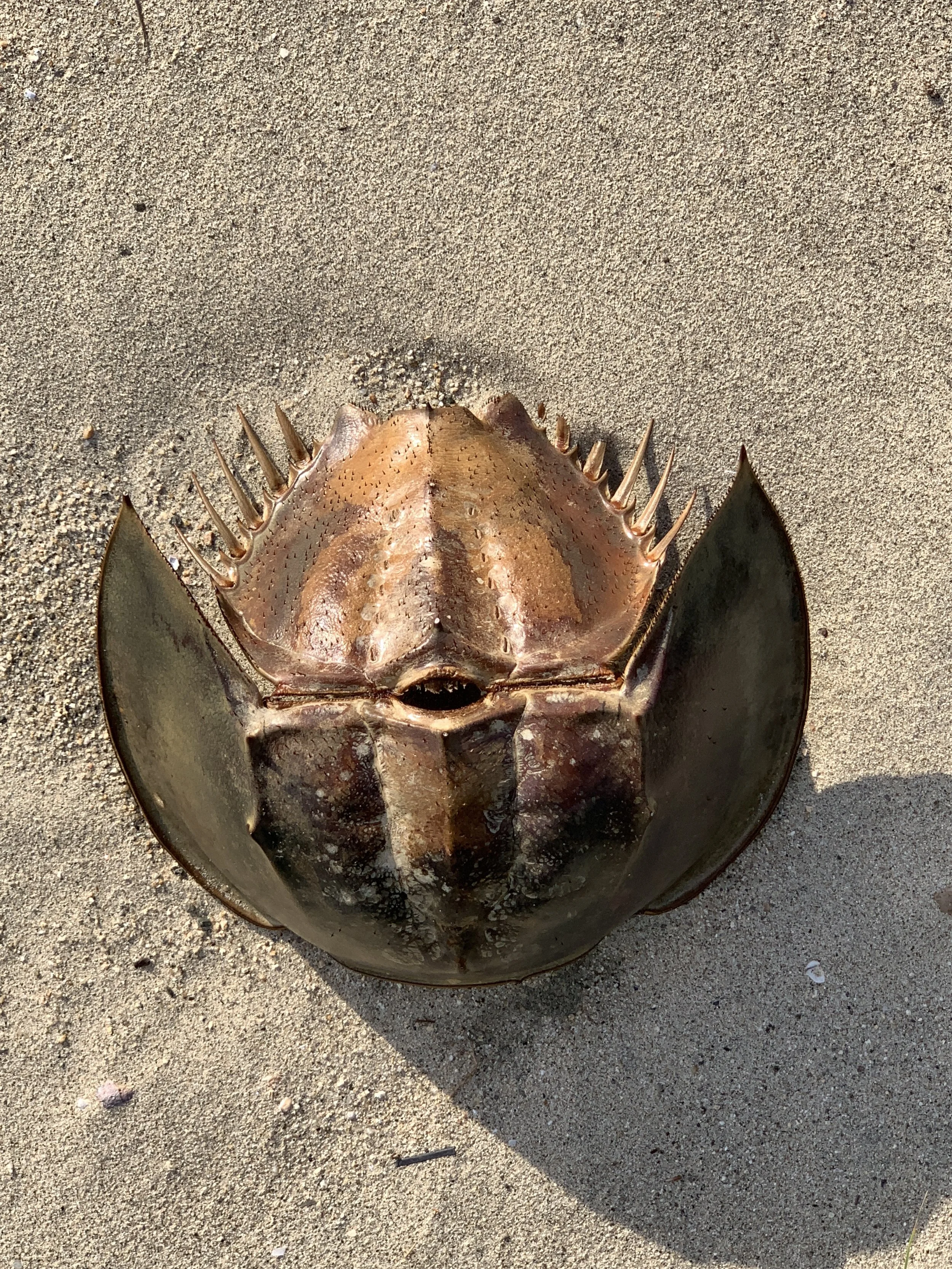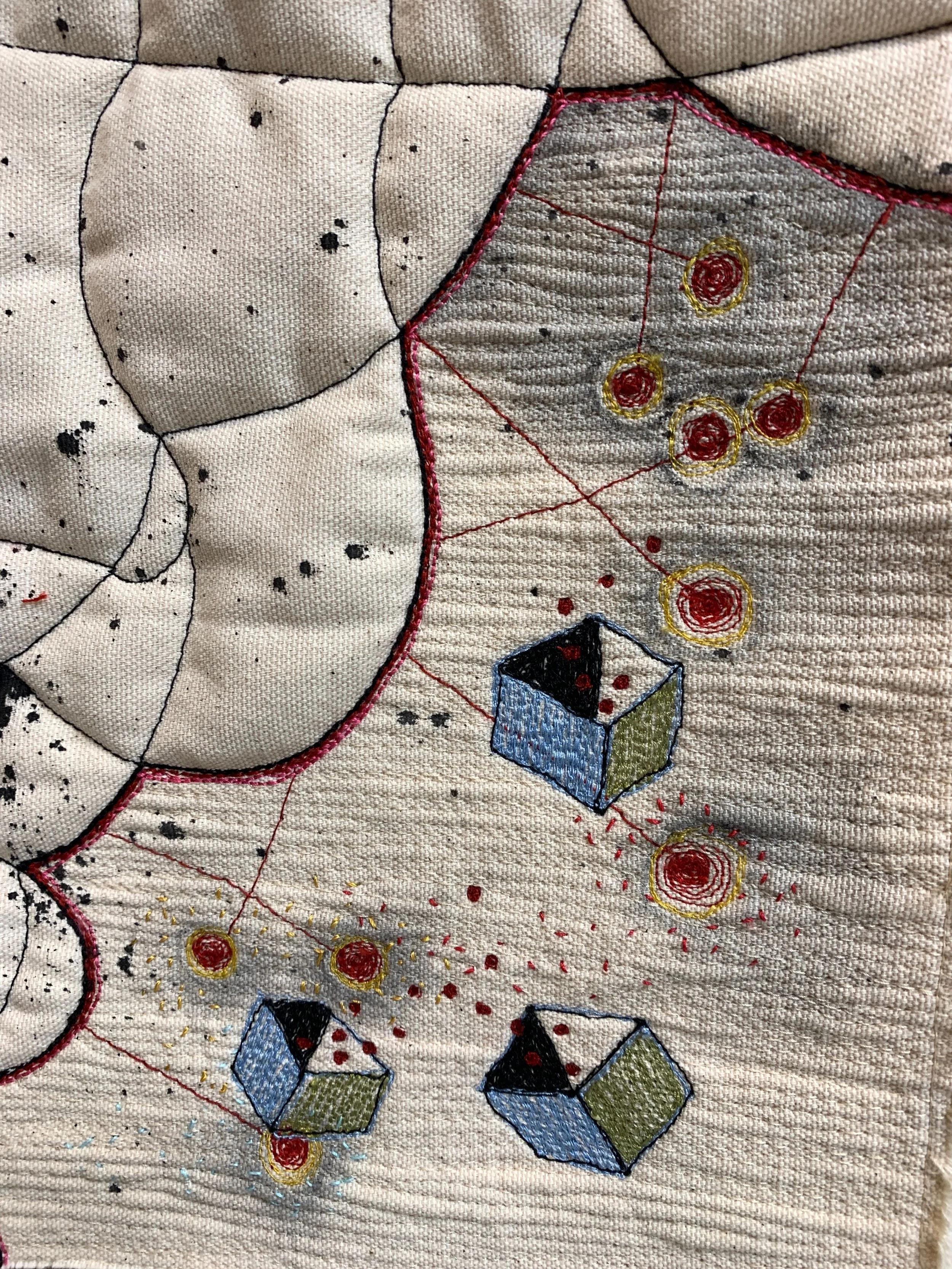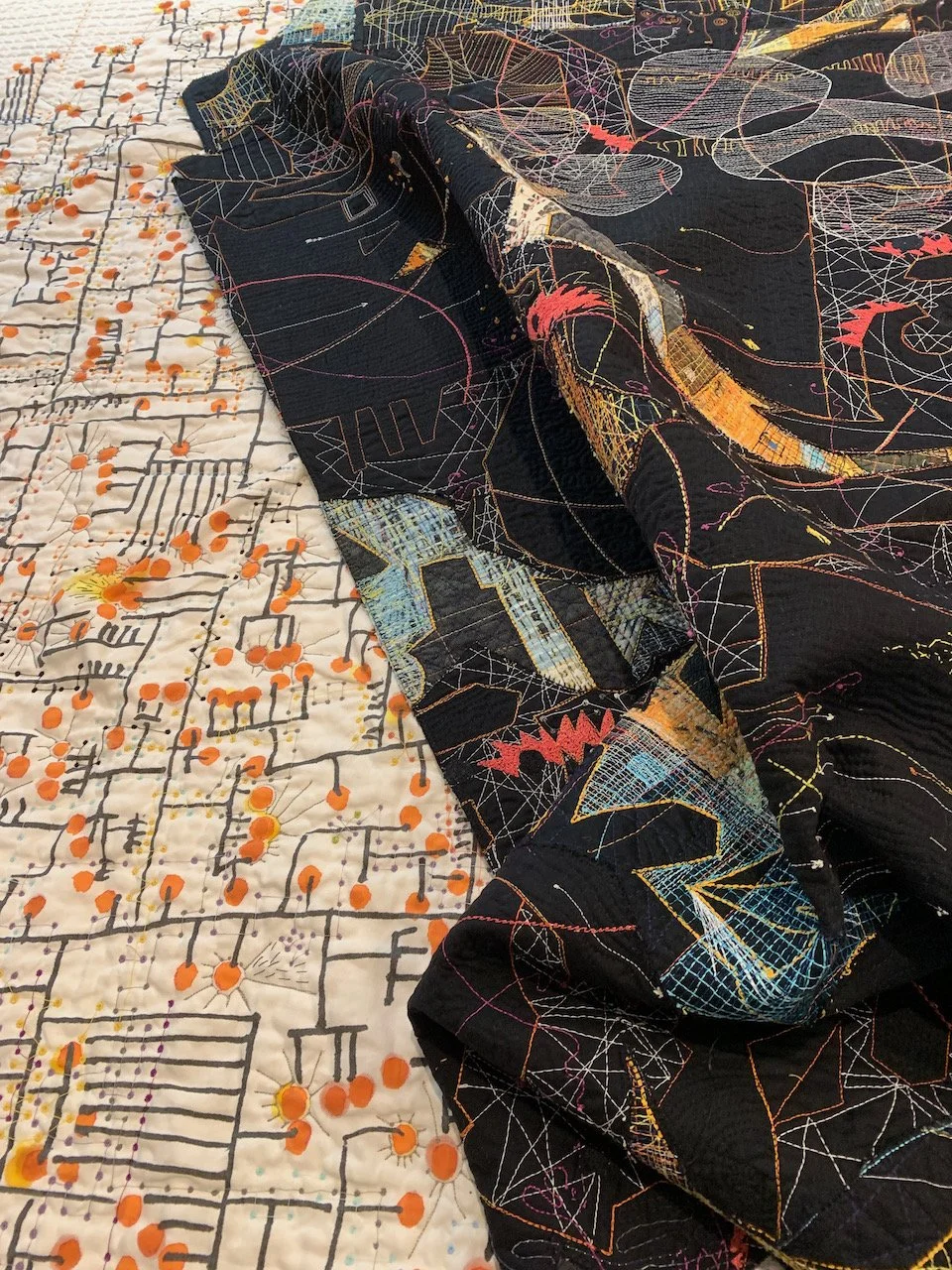Just back from an energizing Common Thread Symposium at North Carolina State University where I met some inspiring artists and fiber art teachers: Susan Kay-Williams from the Royal School of Needlework at Hampton Court; Katherine Diuguid, an incredible hostess and talented fiber artist; Susan Brandeis, Ilze Aviks, Andrea Donnelly, and Jeana Eve Klein to name a few.
A greek chorus in the fiber studio -- whispering to me.
This greek chorus in the fiber studio stood silently witnessing my attempt to show others how I do my work. I couldn't help but identify with their headlessness. When speaking in front of a crowd I feel a little weightless, as if floating and wandering through a third person narrative. I have to trust that my remarks make sense. The students were engaged and interested, and despite some hitches in equipment failures we had a good time learning from each other. I am hoping that they will pursue some of the drawing exercises we played with in their own work.
These silent witness birds gaze out to the lake as if hearing voices.
When I got home this two yard print from Spoonflower was on my desk, spurring me on to work on my Silent Witness project. The photographs from my residency at the Indiana Dunes National Lakeshore have inspired this project based on all those animate and inanimate objects that are witnessing our actions on earth. It started with this photo but then moved on to photos of rocks with faces.
Rocks with faces, stitched on canvas. Those shadows give me some ideas of how the next stage in stitching may proceed.
A lot of the artists I talked with over the weekend spoke about the meditative quality of this work. Hours alone focusing on stitch helps me to clear out confusion, simplify meaning and intensify my message. So when I am burying threads and watching the sun pass over the cloth I think about the passage of time, the care in detail, the silent witnesses to understanding.
Burying threads is an exercise in patience. When I work on something that requires it I think about the finite quality of it. What might feel like an endless chore actually does end, with patience.







































